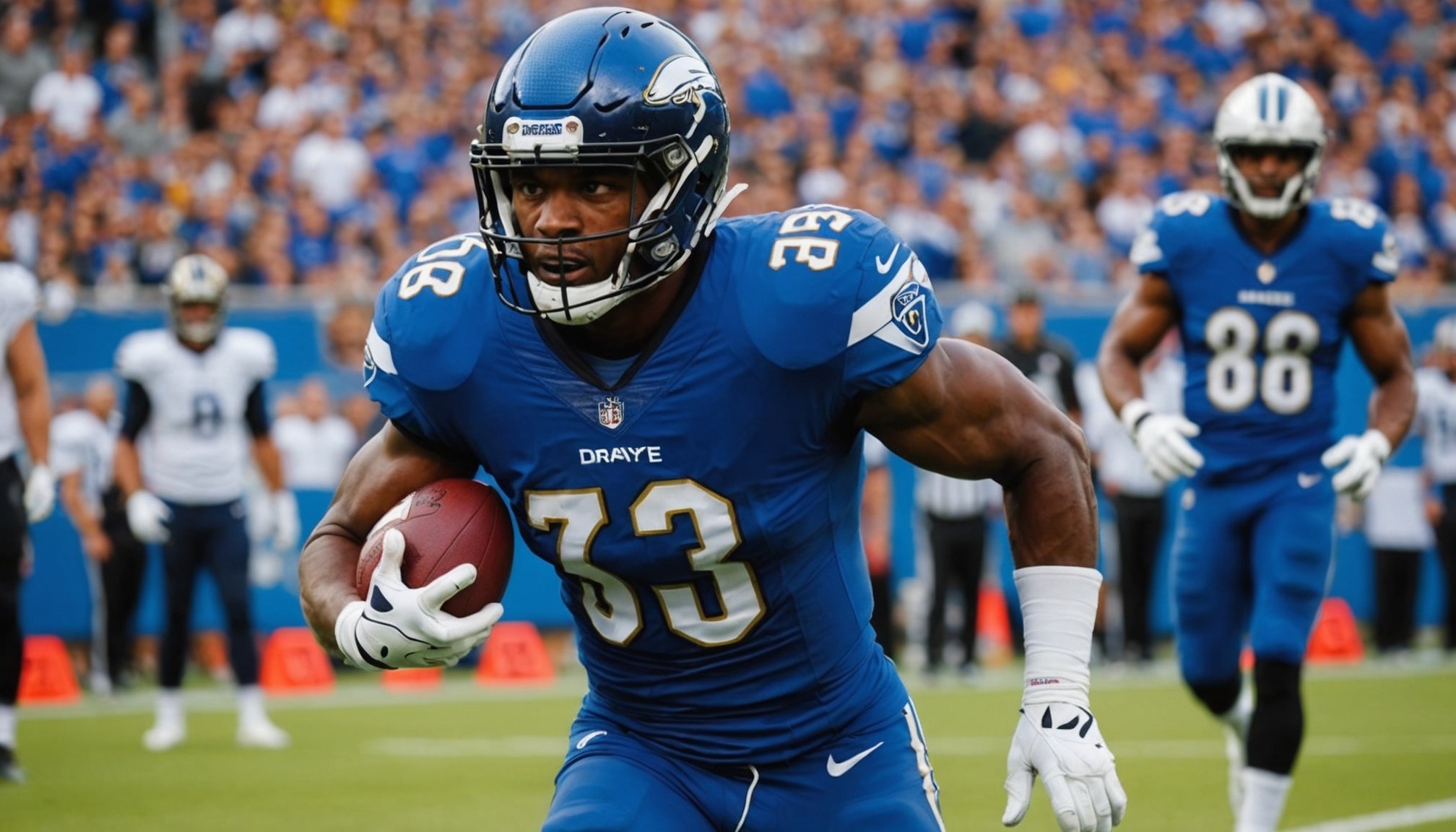Science-backed recovery techniques
To enhance performance for players over 30, integrating recovery techniques into their training regimen is pivotal. Notably, active recovery acts as an essential ally in mending tissues and reducing post-exercise fatigue. Gentle activities like walking or cycling help maintain blood flow and reduce lactic acid build-up without overwhelming the muscles further.
Equally paramount in this recovery equation is age-related recovery focusing on sleep and rest. Sleep functions as the body’s natural repair mechanism, facilitating muscle recovery and reducing injury risk. For older athletes, the emphasis on obtaining 7-9 hours of quality sleep can significantly impact both physical performance and emotional well-being. Incorporating naps or strategic rest periods enhances these benefits, allowing the body to recuperate thoroughly.
In the same genre : Enhancing football performance: discover the unexpected benefits of incorporating yoga into your training regimen
Additionally, balancing training intensity with adequate rest periods supports age-related recovery and extends athletic longevity. Complementing these strategies with targeted recovery exercises and technology-driven monitoring tools optimizes the recovery process. Solutions like compression garments and recovery boots have shown promise in expediting muscle recovery post-training.
Therefore, crafting a regimen that blends active recovery, sufficient rest, and precise interventions can bolster a player’s capacity, enabling them to continue performing at their best as they age. By tailoring these recovery techniques to individual needs, athletes foster resilience and maintain peak performance levels effectively.
Also to see : Unlocking the secrets of effective multicultural communication in football teams: proven strategies for success
Tailored nutrition tips for recovery
In the realm of sports for mature athletes, sports nutrition plays a pivotal role in recovery and performance enhancement. It’s crucial for players over 30 to incorporate key recovery foods into their diet for optimal results. Essential nutrients like proteins, carbohydrates, and omega-3 fatty acids help repair muscles and reduce inflammation. Protein-rich foods like lean meats, fish, and legumes support muscle repair, while carbohydrates replenish glycogen stores, providing sustained energy.
A sample meal plan that supports recovery might include:
- Breakfast: Oatmeal with berries and nuts
- Lunch: Grilled chicken salad with a variety of colourful vegetables
- Dinner: Baked salmon with quinoa and steamed broccoli
Timing meals around training is equally important. Consuming carbohydrates and proteins within 30 minutes post-exercise accelerates recovery processes.
Hydration strategies are another pillar for effective recovery and performance longevity. Adequate water intake not only aids in maintaining optimal function but also facilitates the transport of nutrients throughout the body. Incorporating electrolytes, especially after intensive sessions, ensures the balance of necessary minerals lost through sweat.
By mindfully addressing nutrition and hydration, athletes can effectively support their bodies’ recovery and sustain high-level performance over time. Adjusting dietary habits to accommodate these elements fosters a solid foundation for continuous progress.
Injury prevention strategies
In the realm of sport, injury prevention is crucial, particularly for older football players who face common injuries like strains, sprains, and overuse ailments. Such injuries can severely hinder a player’s ability to perform and enjoy the game. Therefore, understanding effective training modifications is pivotal for enhancing safety and preventing these issues. Tailoring workout routines to include low-impact exercises and emphasizing proper form significantly reduces risk. Additionally, implementing exercises targeting core strength and stability fortifies the body against potential injuries.
Physical therapy plays a key role in this preventive framework. Regular check-ups with therapists not only address existing injuries but also prevent future ones, maintaining peak performance levels. Customised therapy sessions may involve specific strength-building exercises and flexibility training, which are integral to an athlete’s health strategy.
Moreover, consistent communication with healthcare professionals ensures athletes tackle potential problems before they escalate. For a well-rounded injury prevention strategy, integrating feedback from experts and adapting techniques to individuals’ needs improves both safety and performance. By focusing on these key areas, athletes can stay on the field longer and perform with confidence.
Stretching and mobility exercises
Incorporating effective stretching routines is vital for enhancing flexibility and improving the range of motion in players over 30, directly impacting performance and reducing injury risks. Emphasising the difference between dynamic and static stretching is crucial for athletes. Dynamic stretching, involving active movements of muscles to help prepare them for exercise, is recommended during warm-ups. It raises the body’s core temperature and mimics sports-specific movements, which can enhance performance. On the other hand, static stretching, where a stretch is held in a challenging but comfortable position, is more beneficial post-exercise. It aids in cooling down and prevents muscle stiffness.
Mobility exercises are equally essential and should be a part of every athlete’s routine, especially for those over the age of 30. Exercises such as foam rolling, hip circles, and shoulder dislocations target common movement restrictions, maintaining joint health and function. Flexibility enhancement is a critical component that ensures older athletes can continue participating in football with reduced discomfort and increased efficiency. Incorporating these practices regularly allows athletes to perform complex movements with ease, ultimately increasing their athletic longevity and maintaining the joy of playing the sport.
Mental recovery practices
While physical recovery is essential, equally important is the focus on mental recovery for athletes. Stress can negatively impact an athlete’s performance and longevity in sports, but effective stress management can alleviate these effects. Incorporating techniques like mindfulness and meditation gives players over 30 the tools to manage stress effectively, enhancing overall performance and emotional well-being.
Mindfulness practices can take many forms, such as contemplative breathing exercises or guided imagery, promoting increased focus and mental clarity. These activities help in recalibration, making athletes less prone to anxiety and performance pressure. Meditation apps, available on smartphones, provide accessible platforms for guided sessions, often tailored to athletes’ needs. Such tools support relaxation and improve concentration.
Another strategy involves integrating mental recovery into post-game routines. Techniques like journaling allow players to reflect and clear mental clutter, fostering a positive mental state. Regular incorporation of these practices boosts resilience against stress, promoting not just athletic performance but holistic well-being. For athletes aiming to maintain a high level of performance, embracing mental recovery techniques is as crucial as physical interventions, ensuring they stay mentally fit and focused, game after game.
Testimonials and personal anecdotes
Insights from experienced athletes and professionals can greatly enhance our understanding of effective recovery techniques. Player experiences serve as valuable case studies, illustrating how recovery strategies are implemented in real-life scenarios. For instance, former professional footballer Jason Thompson credits his longevity in the sport to early adoption of active recovery and dedicated mental recovery practices. Thompson frequently shares how integrating mindfulness into his routine not only augmented his performance but also alleviated stress, improving his overall emotional well-being.
In addition to player anecdotes, experts provide compelling evidence supporting the need for tailored recovery strategies. Dr. Emily Wade, a prominent figure in sports science, emphasises the role of age-related recovery, particularly for athletes over 30. She highlights that focusing on sleep and rest can be transformational, citing scientific studies that link proper recovery to decreased injury risks and enhanced performance enhancement.
Finally, real-life applications of these techniques bring theory to practice. Footballer Sarah Lewis shares her personal journey of overcoming injuries by prioritising training modifications and mental recovery sessions. Her experiences underscore the profound impact that thoughtful recovery approaches have on an athlete’s career, showcasing the indispensable value of these techniques in maintaining peak athletic condition.











